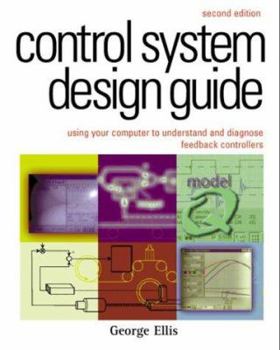Control System Design Guide:: Using Your Computer to Understand and Diagnose Feedback Controllers
Select Format
Select Condition 
Book Overview
Control Systems Design Guide has helped thousands of engineers to improve machine performance. This fourth edition of the practical guide has been updated with cutting-edge control design scenarios,... This description may be from another edition of this product.
Format:Hardcover
Language:English
ISBN:0122374657
ISBN13:9780122374654
Release Date:June 2000
Publisher:Academic Press
Length:456 Pages
Weight:2.60 lbs.
Dimensions:1.4" x 7.7" x 9.5"
Related Subjects
Aerospace Artificial Intelligence Computer Science Computer Technology Control Systems Education & Reference Electrical & Electronic Engineering Electrical & Electronics Engineering Industrial Engineering Industrial, Manufacturing & Operational Systems Mechanical Mechanical Engineering Microprocessors & System Design Robotics TechnologyCustomer Reviews
customer rating | review
There are currently no reviews. Be the first to review this work.













